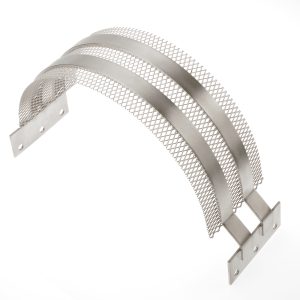PLATINODE® describes the refractory metals, such as titanium and niobium, coated with purest platinum. The electrocatalytic functional layers of platinum or various precious metal oxides are used throughout virtually the entire electrochemical industry.
The platinum coating is applied by means of high-temperature electrolysis (HTE). The platinum is deposited from a cyanide molten salt bath at temperatures of 500 to 600 °C. The functional platinum layer thus produced, shows excellent adhesion in addition to high ductility and maximum purity. It is possible to produce layers with high platinum thickness, maximum corrosion resistance and excellent service life.
Refractory metals such as titanium, niobium, tantalum, molybdenum and tungsten are usually used as the substrate in the production of PLATINODE®. However, various special steelalloys and iron/nickel alloys are also used. Expanded metals, sheet metals, round stock, tubes, rods, ribbons and wires of the most varied materials and dimensions are available. The base metals meet the specifications of DIN and ASTM.
Advantages
- Manufacturing of complex shapes is possible
- Long lifetime
- Easy maintenance
- High dimensional stability and loading capacity
- Good corrosion resistance
- Low weight
- Perfect current and termal distribution
- Replatinizing with crediting of residual platinum
Applications
- Hard chrome plating (piston rings, printing cylinders, etc.)
- Precious and non- precious metal electroplating
- Electronics and semiconductor industry
- Chemical process engineering




